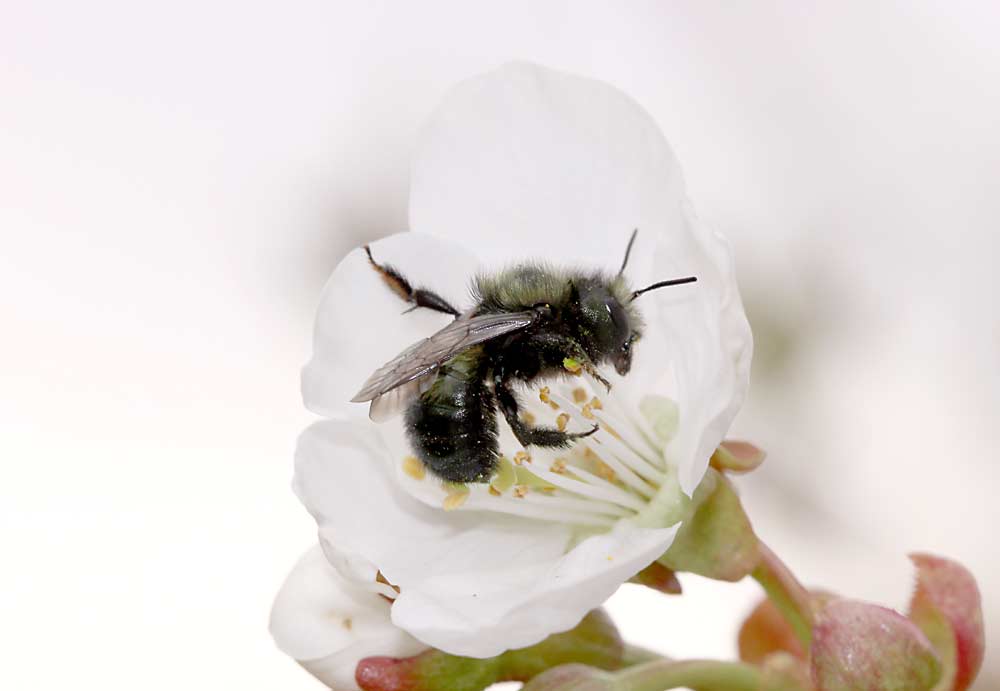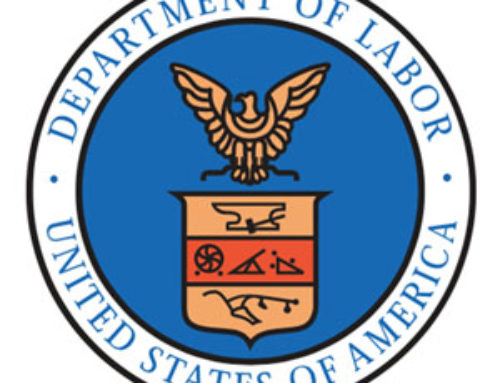
It turns out blue orchard bees do augment the pollination work of traditional honey bees in sweet cherry and pear orchards.
A U.S. Department of Agriculture trial led by entomologist Natalie Boyle showed promising results in the first year of data collected from Washington orchards. Her previous trials showed that the bees boost fruit set in tart cherries in Utah orchards, and they have been used commercially in California almond orchards for some time.
In Boyle’s 2019 Washington trials, funded with a Washington State Department of Agriculture Specialty Crop Block Grant, the blue orchard bees proved effective at helping out sweet cherries and pears, two crops that sometimes struggle to set fruit with honey bees alone. The trials will continue this year and in 2021.
Boyle set up nesting tubes and released about 750 blue orchard bees per acre at three sites each for Bing cherries and green Anjou pears. Each site was 5 acres, and growers set out honey bees at each site, as well. Pear orchards were in the Wenatchee and Yakima valleys, while cherry orchards were in the Columbia Basin.
The pear orchard fruit set increased by 8 percent, cherries by 7 percent.
Blue orchard bees, Osmia lignaria, also known as mason bees, are solitary pollinators native to North America, are well-suited to orchards and forage in cooler spring weather than do honey bees. Research has shown wild bees of all kinds visit commercial fruit orchards, but blue orchard bees are now commercially produced and managed as pollinators. They’re commonly used in California almond orchards as supplemental pollinators, and Washington has some of the biggest producers, Boyle said.
“We should be considering how to use them,” Boyle said at the Washington State Tree Fruit Association Annual Meeting in December in Wenatchee.
They have a short active season of only four to six weeks, during which they forage and build nests in hollow reeds, stems or commercial wooden nesting tubes to provision the next generation that will emerge the following spring. Boyle sets out nesting tunnels for them in her trials.
This is one area where more study is needed, Boyle said. Her statistics on “recovery” rates — how much female progeny emerged the following season — were inconsistent, and she’s not sure why.
Recovery rates at the three Columbia Basin cherry sites were 30 percent, 39 percent and 79 percent, but pears were all or nothing. In Yakima pear orchards, she had 105 percent recovery. In Dryden and at the Peshastin site, she had zero.
“I can’t tell you why that is,” she said. Weather could have been a factor, but each orchard had different management strategies, too.
Boyle did her blue orchard bee work as a postdoctoral researcher at the U.S. Department of Agriculture’s Pollinating Insect-Biology, Management, Systematics Research Unit in Logan, Utah — typically called the Logan bee lab. She now works as the educational program coordinator for the Center for Pollinator Research at Pennsylvania State University.
However, other Utah researchers plan to continue the Washington trials for two more years under the same three-year grant, said Theresa Pitts Singer, a research entomologist at the Logan bee lab.
They aim to study more closely the pollen sources used by the bees throughout the year and the soil conditions in the orchards, Pitts Singer said. Blue orchard bees prefer muddy soil in which to build their nests. The researchers also have begun some orchardist surveys and will continue them. •
—by Ross Courtney
Related:
—New mason bee pest found in Pacific Northwest
—A better bee? Blue orchard bees show promise as pollinators






Leave A Comment